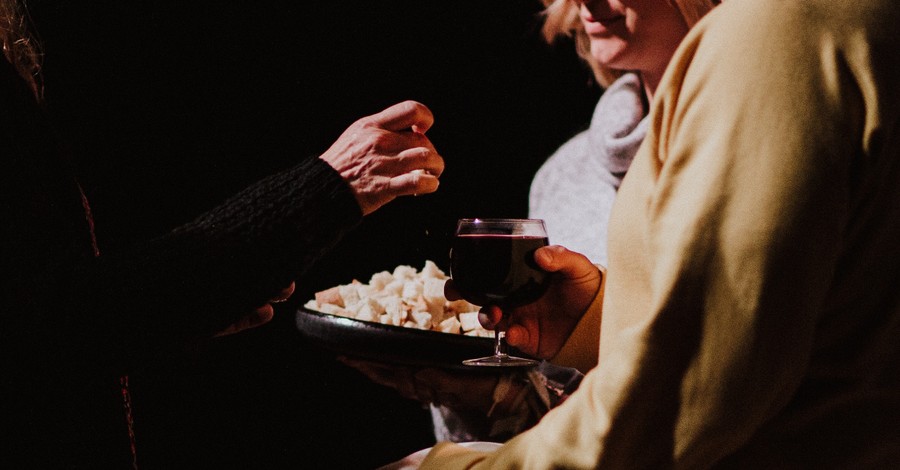
So many of my peers are leaving God because of their experiences with spiritual abuse. It’s not an excuse, but it is a factor. And it breaks my heart. It makes me endlessly sad to know how beautiful and kind God is, but also to know how he has been twisted and corrupted in young people’s minds as a result of incorrect teaching. I scroll through Instagram, seeing the lives of old acquaintances who have left God and what their life is like now. They look happier, and maybe they are. But I know that God is so sweet, and a life without him could never compare to life in him. And I just want people to know that there is a third option. It’s not just be abused or leave the church. There is so much healing and life on the other side.
I’m not saying that every instance of incorrect teaching is spiritual abuse. Spiritual abuse is a consistent pattern that happens over time. But there are some false teachings that fit within the paradigm of spiritual abuse and cause the same harm. One of the most significant false teachings that sticks out to me from my time in a spiritually abusive environment was how communion was taught.
Now that I know that communion is about celebration and not self-flagellation, I just want everyone to see and know this Jesus: the Lord of life, celebration, and victory. Not the Jesus of shame, condemnation, and hyperfocus on our sin.
How Communion Usually Goes in American Churches
I really could be overgeneralizing, but I don’t think I’m too far off the target. Communion usually goes something like this: Someone shares a Gospel story centering around the cross. Jesus is portrayed as the poor soul that was obligated and forced to go to the cross because of our horrible sin.
The person upfront either goes into grave detail about the physical torture of the cross or goes into grave detail about their own sin. It ends with an exhortation to sit quietly in our seats as we take a measly nibble of bread and sip of grape juice, thinking about Jesus’ sacrifice and what put him up there on the cross.
Quiet music plays, we sit in silence, and ends with an “Amen, now let’s pass the collection basket around.”
Was this really what Jesus had in mind when he offered wine and bread as symbols of his own life being freely given to us? Sitting in silence by ourselves? Focusing on our own individual sin and how unworthy we are? Just having a time of somber reflection and moving on? What about this ‘communion’ is communal …?
Why This Approach to Communion Is So Damaging
Spiritual abuse uses fear about spiritual things to control and manipulate its victims. Having a dedicated time each week or month just to sit and think about what a horrible person you are plays right into that. Of course, no one would ever outright tell you that is what communion is for. But that is the implication when the only lessons about communion that we are given are about what our wretched sin did to Jesus.
My wretched sin did put Jesus up on the cross. It’s true. I did that. And it is healthy to recognize that. But Jesus’ story doesn’t end at the cross. So why do we act like ours does?
One thing that was emphasized from time to time was that we’d better make sure we aren’t taking communion in an “unworthy manner.” This comes from a misinterpretation of 1 Corinthians 11:17-34, specifically verses 28-29:
“Everyone ought to examine themselves before they eat of the bread and drink from the cup. For those who eat and drink without discerning the body of Christ eat and drink judgment on themselves.”
The message that was implied from this scripture was that you’d better be worthy when you took communion, because if not, you would be judged. You’d better have it together. You’d better fix yourself before approaching God through communion.
But this exhortation from Paul was about the specific instance in the Corinthian church where the rich would eat their communion meal without the poor, get drunk on the wine, create social divisions, and essentially turn communion into a social club.
That is the specific scenario this was written to – not to every Christian who has a slightly guilty conscience about something and needs to get it together before they’re allowed to receive Jesus. It’s exactly in our unworthiness that Jesus freely gave himself!
What this type of communion message did to me over time was teach about a Jesus who was constantly disappointed in me, who I would never be good enough for. It taught me to view myself as utterly sinful and out of reach of God.
I would question every week if I was good enough that week to take communion. And if I did, I would sit in my seat and think about my sin, trying to render tears to show that I was sorry enough about my sin to deserve the cross.
We seem to forget that Jesus didn’t just die on the cross for us, but he left the tomb! He died because of our sins, but he also rose again so that we could have new life!
What Communion Was like for the First Century Church
To the 1st Century Church, communion was considered an “agape love feast.” It was a full meal to be enjoyed by the entire house church together.
First Century Churches were made up of small house churches, under 40 people, and met in someone’s home. The richer members of the house church would share their food with the poorer members, making the meal function as an act of generous charity. They would thank God for the bread and the wine and enjoy the full meal together.
The sacrament of the wine and the bread represented participation in Christ’s death, but also in his resurrection. The sharing of the bread bonded the community of the house church together, made up of all different social classes of people; a stark contrast to the world that they existed in. In the eating of the bread and the taking of the cup, they become one in Christ together.
It’s a gorgeous picture of heaven on earth: an abundance of food and fellowship; everyone being taken care of and fully satisfied; social classes being brought as everyone realizes not only their need for grace but their absolutely overflowing possession of it, together.
When Jesus gives his disciples the bread as a representation of his body that was given for them, the phrase for “which is given” in Greek has so many beautiful connotations of gift-giving, to give oneself to take care of another, to reach out. This was not an act out of obligation. Jesus was extending his whole life to them.
Bread is sustaining, comforting, and gives us energy and a great sense of satisfaction. He is handing them, and us, his sustenance. His miracles. His relationship with God.
And in that culture, to present a bride with a cup of wine for her to drink from, and to tell her that you will not drink from the fruit of the vine until you come back for her, was their version of a marriage proposal. If she drank from the cup, she was saying yes. So in this moment of Jesus presenting the Lord’s Supper, he is proposing to his disciples. It’s just so intimate and so beautiful.
We use wine to celebrate life, to slow down, to enjoy good things and time with each other. The fact that comforting bread and celebratory wine are the elements that Jesus chose to represent his body and blood given to us is so stunning. And it’s something we’re supposed to celebrate together! To share in a full, satisfying, generous meal all together and remember all Jesus has done for us.
It’s just such a stark contrast to sitting by ourselves, in our tiny seats, in silence, thinking about our sin. It is so far from the original intent.
When I think of how kind Jesus is to give his life to us in this way, I want to dance, not cry. I want to praise him, not focus on my sin. And I want to celebrate my new life with others, not isolate and emotionally spiral.
If we want people to know this Jesus and prevent more young people from leaving the church at the hands of a spiritually abusive environment, our practice of communion is a beautiful place to start.
The views expressed in this commentary do not necessarily reflect those of Christian Headlines.
Photo courtesy: Priscilla du Preez/Unsplash
The views expressed in this commentary do not necessarily reflect those of CrosswalkHeadlines.
Kelly-Jayne McGlynn is a former editor at Crosswalk.com. She sees the act of expression, whether through writing or art, as a way to co-create with God and experience him deeper. Check out her handmade earrings on Instagram and her website for more of her thoughts on connecting with God through creative endeavors.










